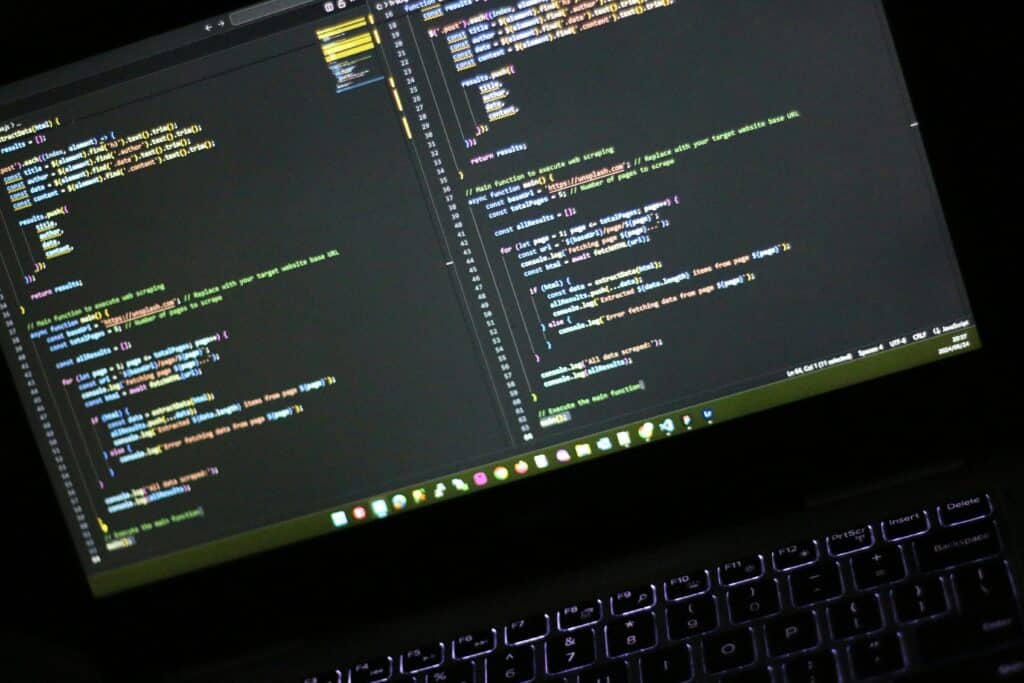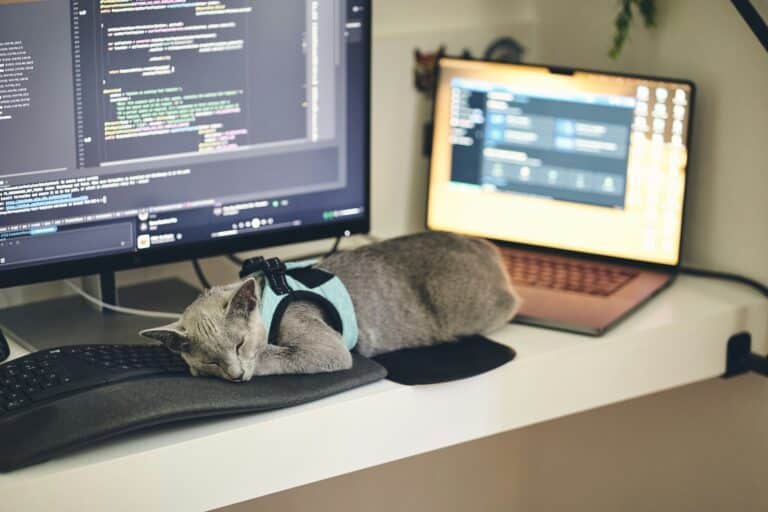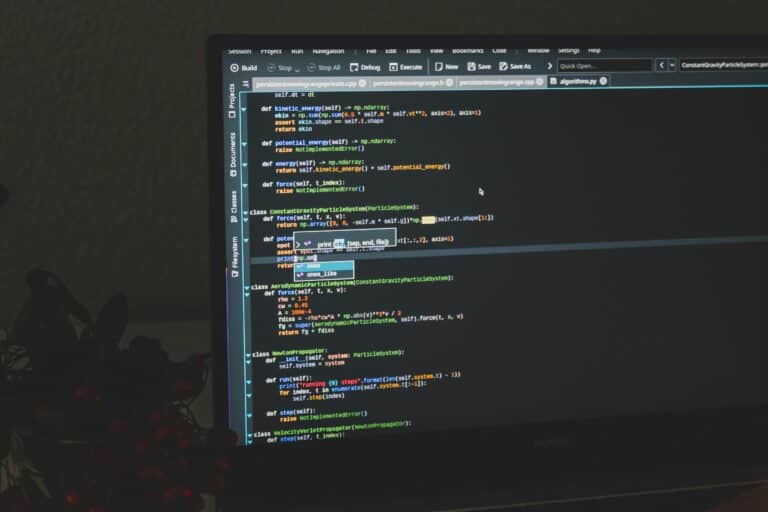Imagine you’re in your coding zone, hammering away on your keyboard, the keys dancing under your fingers as you bring your creative vision to life. You’re in the groove, and then… ping! An email alert. Or a social media notification. Or a team message. Your flow shatters and it takes you minutes, maybe even hours to find it again. 😫

What if you could shield yourself from these distractions and stay focused on your code? What if you could experience the Zen of pure, unbroken concentration? In this article, we’ll explore the options available to help you achieve this state of hyper-focused productivity, comparing both free and paid solutions for distraction-free coding. 💻✨
Now, the truth is, in the age of constant connectivity and endless alerts, distraction-free coding has become somewhat of a holy grail for developers and programmers worldwide. As the saying goes, “Time is money,” and in the realm of coding, it’s no different. The question then becomes: Is a free solution sufficient to keep us in the zone, or is it worth shelling out a few bucks for a premium, distraction-free environment?
In this comprehensive guide, we’ll put our tech-expert hat on and delve into the nitty-gritty details of each option. We’ll examine the benefits, drawbacks, and unique features of popular free and paid coding platforms. We’ll also look into tools that can help mute those pesky alerts, block distracting websites, and create a serene, conducive environment for coding. 🚀🔒
But we won’t stop there. We’ll also explore how you can build your own internal system of focus. We’ll discuss mindset, discipline, and techniques that can help you tune out the noise and stay in the zone. We’ll share expert advice on how to manage your time, structure your day, and balance your workload for optimum focus and productivity. 💪🧠
Whether you’re a seasoned programmer looking for ways to improve your productivity, or a coding newbie striving to make the most of your learning hours, this article has something for everyone. From free tools like Pomodoro timers and website blockers to paid software offering tailor-made coding environments, we’ll leave no stone unturned in our quest to help you maximize your focus and minimize distractions. 🎯
Remember, the journey to distraction-free coding isn’t a one-size-fits-all path. It’s about finding what works best for you, your workflow, and your mind. It’s about understanding that, while the right tools can certainly help, ultimately, it’s your own discipline and determination that will keep you on track. 🛤️🔥
So, are you ready to dive into the world of distraction-free coding? Are you eager to discover which tools and techniques can help you maintain your focus and supercharge your productivity? If the answer is yes, let’s get started. Your code – and your peace of mind – will thank you for it. 👨💻🚀
Unlocking Your Coding Potential: A Deep Dive into Distraction-Free Environments
Picture this: You’re knee-deep in a complex piece of code, your mind focused and determined to solve the problem at hand. Suddenly, an intrusive notification pops up, breaking your train of thought and disrupting your focus. You’re not alone. Distractions are an omnipresent menace in the modern-day workspace. Especially for developers, uninterrupted concentration is critical in achieving productivity and optimal results.
Fortunately, software companies have identified this need and designed various tools and platforms to help minimize these distractions, allowing you to fully immerse yourself in your coding. These options range from free, open-source tools to premium, feature-packed software. But, which one should you choose? To help you make an informed decision, let’s delve into an exploration of free vs. paid options for distraction-free coding.
We’ll compare several platforms, identify their strengths and weaknesses, and examine how they can enhance your coding experience. Before we jump into the details, let’s first understand why distraction-free coding is a game-changer in the world of software development.
The Power of Distraction-Free Coding
Distraction-free coding refers to an environment or a state where a developer can focus entirely on the task at hand, without any interruptions or distractions. It’s about creating a mental and physical workspace that’s conducive to deep work. This could involve anything from a clean, minimalist UI that removes unnecessary clutter to functionalities that block distracting websites or notifications.
Distraction-free coding brings a plethora of benefits to the table. It allows developers to delve into deeper levels of concentration, fostering creativity and problem-solving abilities. It also results in increased productivity and efficiency, with developers accomplishing more in less time. According to a study by the University of California, Irvine, it takes an average of 23 minutes and 15 seconds to get back to the task after a distraction. That’s a lot of valuable time lost!
Now that we’ve seen why distraction-free coding is essential let’s dive into the different options available in the market and how they compare.
Free vs. Paid Options: Unveiling the Best Tools for Distraction-Free Coding
There is a multitude of tools and platforms that promise to provide a distraction-free coding environment. These range from free, open-source tools to premium ones that come with a price tag. Let’s take a closer look at some of the most popular ones and see how they stack up against each other.
| Tool | Type | Strengths | Weaknesses |
|---|---|---|---|
| Visual Studio Code (Free) | Text Editor | Highly customizable, extensive range of plugins, integrated terminal | Can be overwhelming for beginners |
| Sublime Text (Paid) | Text Editor | Fast and lightweight, distraction-free mode, powerful features | No free version available |
| Atom (Free) | Text Editor | Open-source, highly customizable, built-in package manager | Performance issues with larger files |
| IntelliJ IDEA (Paid) | Integrated Development Environment (IDE) | Excellent for Java, intelligent coding assistance, robust debugging tools | Expensive, steep learning curve |
As you can see from the table above, each tool has its unique strengths and weaknesses. The key is to identify what your needs are and choose the tool that best aligns with them. For a deeper understanding, you can watch the YouTube video titled “Top 5 Text Editors in 2020” by Traversy Media.
Maximizing the Benefits of Your Chosen Tool
Whether you opt for a free or paid tool, the ultimate goal is to maximize its benefits to enhance your coding experience. Here are a few tips to help you get the most out of your chosen tool:
- Customize your environment: Most tools allow you to customize your workspace to your liking. This could mean adjusting the UI, setting up keyboard shortcuts, or installing plugins that enhance functionality.
- Learn the shortcuts: Every tool has a set of keyboard shortcuts that can drastically speed up your coding process. Invest some time in learning these, and you’ll see a significant increase in your productivity.
- Use distraction-blocking features: If your tool has features to block distracting websites or mute notifications, make sure to use them. If not, there are several external apps available that can do this for you.
Remember, the tool is only as good as how you use it. Even the most feature-packed, expensive software won’t be of much use if you’re not leveraging its capabilities to the fullest.
Embrace Distraction-Free Coding Today!
In conclusion, distraction-free coding is not just a trend, but a necessity in today’s fast-paced, distraction-filled world. The tool you choose, free or paid, should align with your requirements, work style, and budget. Each tool has its own strengths and weaknesses, and what works best for you might not work for someone else.
So, explore the various options available, watch relevant YouTube videos like “The Best Coding Tools You Can Get in 2020” by Stefan Mischook, and make an informed decision. Happy coding!
Conclusion
In conclusion, we have delved deep into a comprehensive discussion on the importance of robust technical concepts in fields like IT and engineering. We’ve navigated through the intricate aspects of this subject, underscoring the critical role these technical concepts play in shaping the future of these industries.
Throughout the discussion, we emphasized the significance of good practice in software development, the importance of hardware integration, and the progressive evolution of cloud computing. We also explored the intricate world of data structures and algorithms, their impact on efficiency and processing speed, and how they continue to revolutionize the way we think about problem-solving.
We further expounded on the notion of security in the IT realm, stressing the importance of encryption and protocols in maintaining data integrity. The discussion on machine learning and artificial intelligence opened up a new perspective on the future of automated systems, with a special focus on their potential to disrupt traditional approaches in virtually every industry.
In the light of this, we encourage you to further your understanding of these topics. The realm of IT and engineering is ever-changing, and staying up-to-date with the latest trends and technological advancements is a necessity for anyone looking to excel in these fields.
You can delve deeper into these topics through these research links:
– Association for Computing Machinery
– IEEE Xplore Digital Library
– ACM Digital Library
It is important to remember that while the technical aspects are crucial, so too is the ability to communicate these concepts effectively. I hope that this article has managed to distill complex subjects into understandable language, and I would love to hear any feedback or questions you might have. 🖥️📚
If you found this article informative and beneficial, do consider sharing it with your friends or colleagues. Furthermore, if you have any insights or experiences you would like to share, please do so in the comments section below. Your contributions could provide valuable perspectives for others in our community.
In the fast-paced world of IT and engineering, continuous learning and application of new knowledge are not just options, but necessities. So, I would strongly encourage you to take what you’ve learned from this article and apply it in your own context. 💡
Let’s keep the conversation going, explore new horizons, and together, we can propel ourselves to greater heights in the world of IT and engineering. 💼🌐
Tags: Software Development, Hardware Integration, Cloud Computing, Data Structures, Algorithms, Encryption, Machine Learning, Artificial Intelligence.



